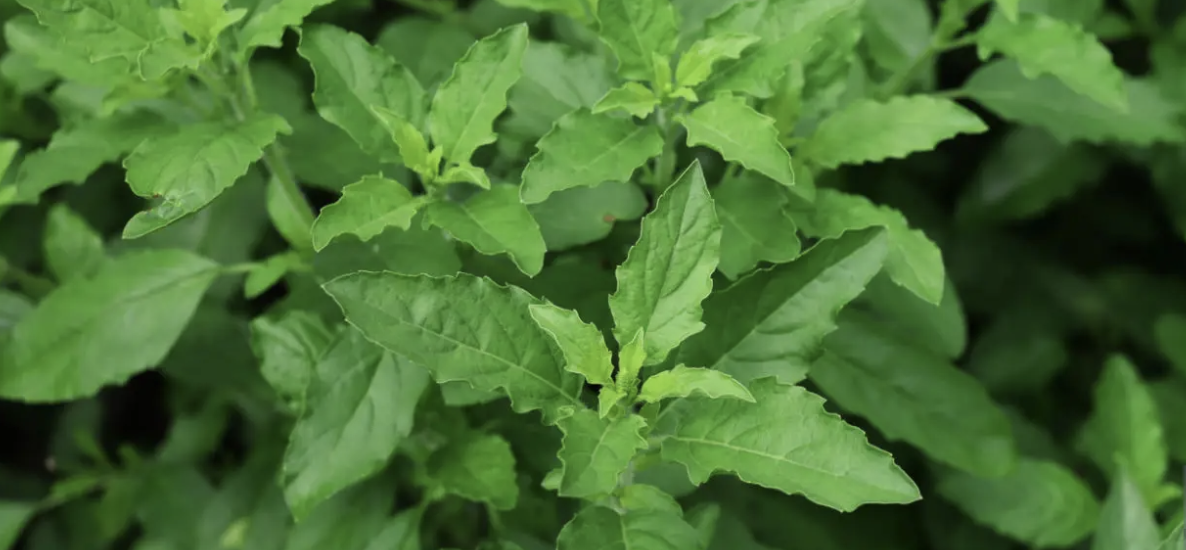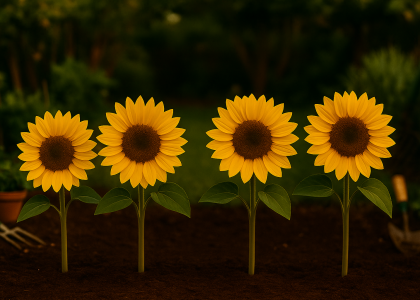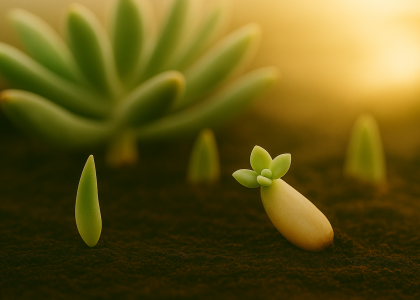There’s something grounding about tending basil—whether it’s brushing your hand over its fragrant leaves or snipping a sprig for dinner. But growing basil well means understanding its needs from sunlight to soil, pests to partners. This guide brings together everything a beginner or semi-experienced gardener needs to grow thriving basil plants indoors or out—while solving real-life gardening challenges with ease and calm.
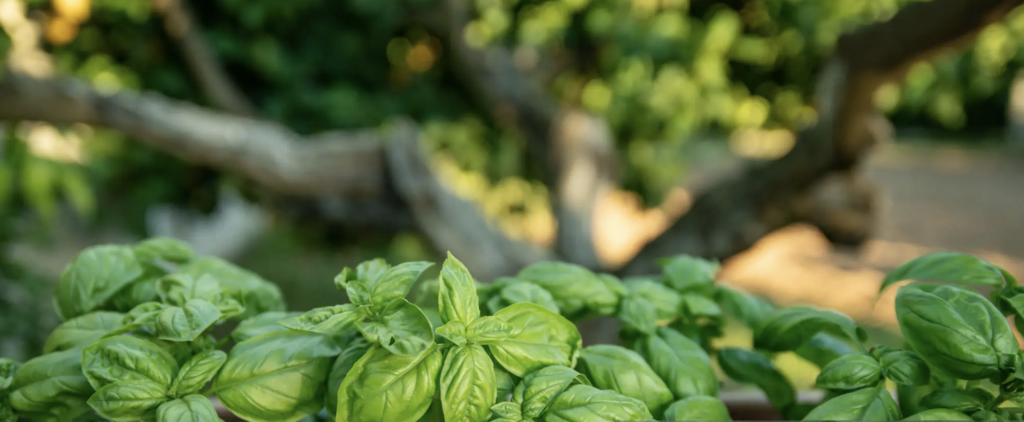
Quick Basil Facts
| Botanical Name | Ocimum basilicum |
| Common Names | Sweet basil, Genovese basil |
| Plant Type | Tender annual (perennial in zone 10+) |
| Height | 12-24 inches (30-60 cm) |
| Sunlight | 6-8 hours of full sun |
| Watering | Keep soil evenly moist, avoid sogginess |
| Best For | Containers, windowsills, raised beds |
5 Essential Tips for Growing Basil Like a Pro
1. Sunlight & Warmth: The Foundation of Flavor
Basil thrives in 6-8 hours of direct sunlight. Without enough light, expect leggy, flavorless stems.
Pro Tip:
- Outdoors: Select a sunny spot, but in hot climates (90°F+ / 32°C), provide afternoon shade or mulch the base to keep roots cool.
- Indoors: Position basil near a south-facing window or supplement with a grow light (12-14 hours/day).
Ideal temperature: 70-85°F (21-29°C).
Cold snaps below 50°F (10°C)? Bring containers indoors or use a cloche or cold frame for protection.
2. Pruning for Productivity: Unlock More Leaves
Left alone, basil bolts to flower fast. Pruning encourages bushy, leaf-filled growth.
Try This:
- Pinch off the topmost leaves above a leaf node once basil reaches 6 inches tall.
- Weekly pinching encourages branching—resulting in double or triple the leaves.
- Never harvest more than ⅓ of the plant at once to maintain vigor.
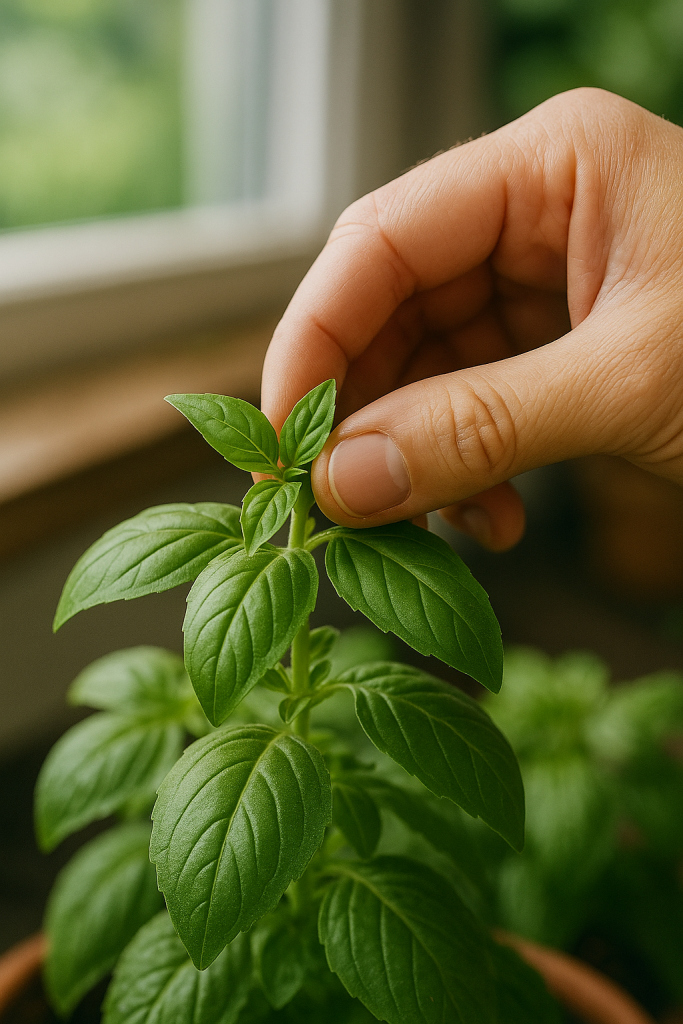
3. Seeds or Cuttings: Choose Your Growing Style
- Seeds: Sow indoors 4-6 weeks before the last frost. Germinate in 5-10 days at 70°F (21°C).
- Cuttings:
- Snip a 4-inch stem cutting.
- Place in water; roots develop in 7-10 days.
- Transplant when roots are 2 inches long.
Perfect for both patient seed-sowers and speedy propagators!
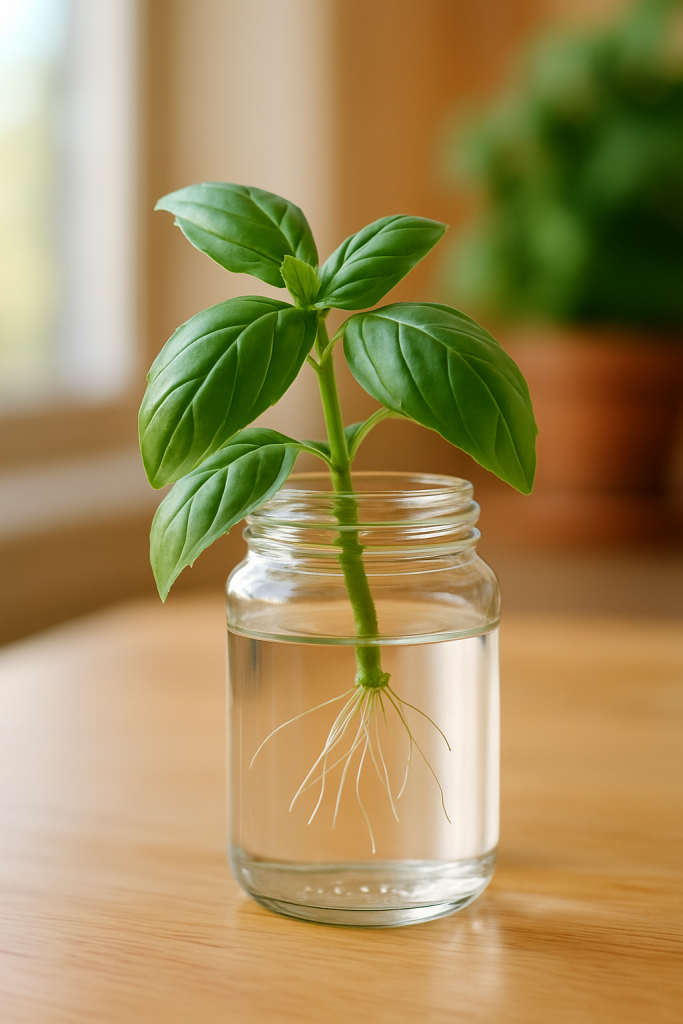
4. Container Gardening: Basil’s Happy Place
Basil loves containers—ideal for urban spaces and balconies.
| Container Size | Soil | Drainage |
| 6-8 inch wide pot | Well-draining potting mix + compost | Ensure drainage holes |
Use terracotta pots for breathability and avoid root rot.
5. Creative Kitchen Uses: Beyond Pesto
- Infuse basil leaves into lemonade, oils, or teas.
- Sprinkle basil flowers in salads or desserts.
- Pair different varieties for unique culinary twists.
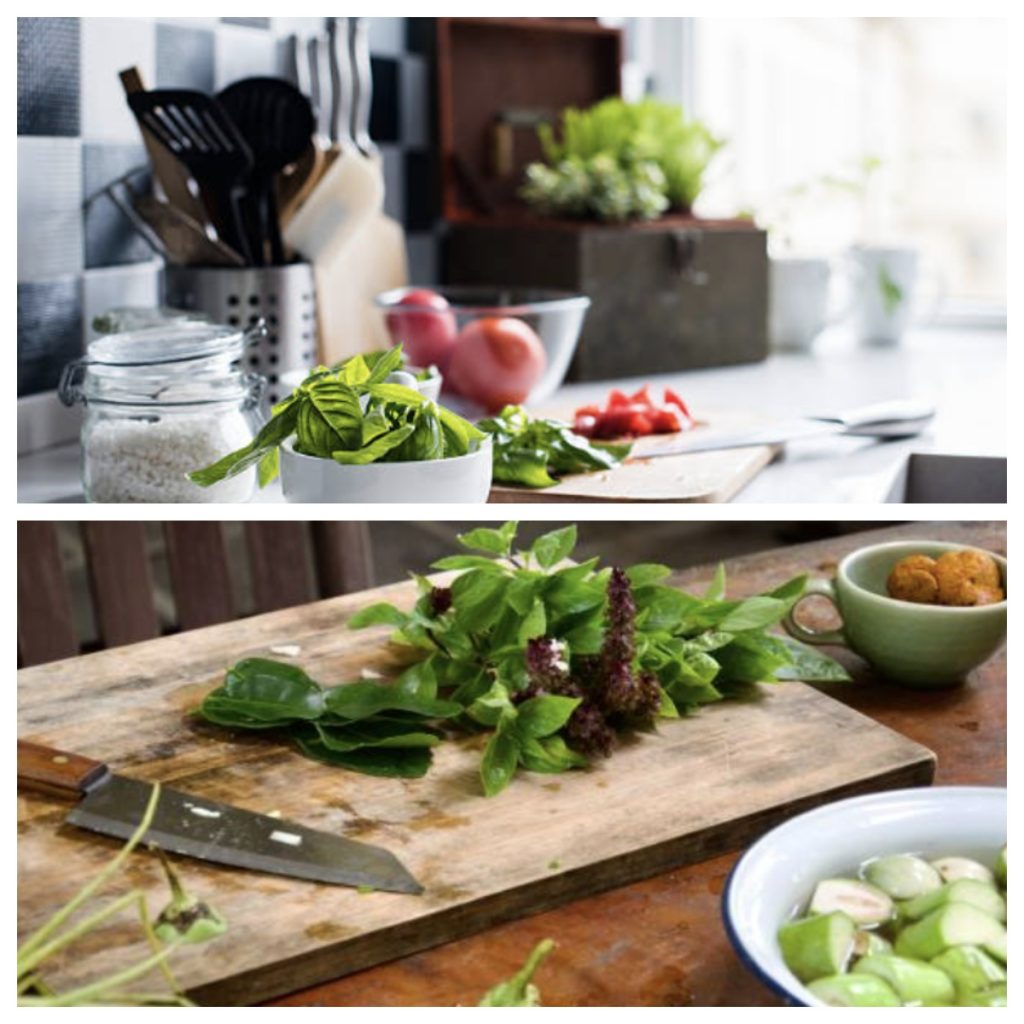
Companion Planting: Basil’s Best Friends
Basil isn’t just great solo—it’s a garden team player.
| Companion | Benefit |
| Tomatoes | Enhances flavor, repels whiteflies |
| Peppers | Deters pests, creates microclimate |
| Oregano | Ground cover, pest deterrent |
| Marigolds | Combined pest-repelling powerhouse |
Avoid planting basil near rue or sage, as they may stunt its growth.
Avoid These Common Basil Growing Mistakes
1. Pests & Diseases: Know What to Watch For
| Problem | Symptoms | Solution |
| Downy Mildew | Yellowing leaves, white fuzz underside | Improve airflow, water at soil level, remove infected leaves |
| Aphids | Curling leaves, sticky residue | Spray with neem oil or soapy water |
| Whiteflies | Tiny white insects fluttering, leaf drop | Use yellow sticky traps, neem oil spray |
Prevention Tips:
- Space plants for air circulation.
- Water at the base, early in the day.
- Inspect leaves regularly.
2. Water Wisely: Don’t Drown or Starve
| Stage | Watering Frequency |
| Seedling | Light mist daily to keep soil evenly moist |
| Established | Water when the top inch of soil feels dry |
| Hot weather | Check soil daily, water every 1-2 days |
| Cooler seasons | Reduce to once every 3-4 days |
Use a soil moisture meter for precision.
3. Winter Indoor Care: Keep Basil Thriving Year-Round
- Light: Provide 12-14 hours/day with a grow light in winter months.
- Temperature: Maintain indoor temps 65-75°F (18-24°C).
- Humidity: Keep humidity at 40-50%. Use a humidity tray or mist occasionally.
Basil can overwinter indoors but may slow down. Regular pruning keeps it productive.
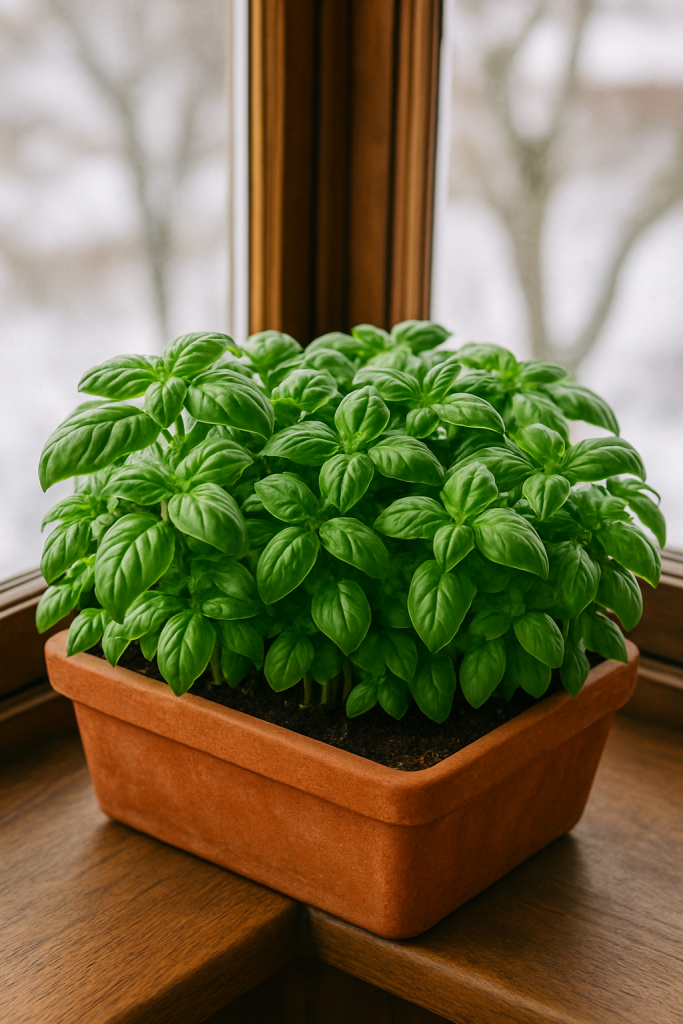
4. Choose the Right Basil Variety for Your Needs
| Variety | Flavor Profile | Best Use | Climate Adaptability |
| Genovese | Classic sweet, rich | Pesto, Italian dishes | Warm, sunny climates |
| Thai Basil | Spicy, anise-like | Curries, soups | Heat-tolerant, humid areas |
| Lemon Basil | Citrusy, fresh | Teas, desserts | Tolerates cooler, moist climates |
| Purple Basil | Mild, peppery, colorful | Salads, garnishes | Good for ornamental beds |
Experiment with multiple varieties for a flavorful and vibrant herb garden.
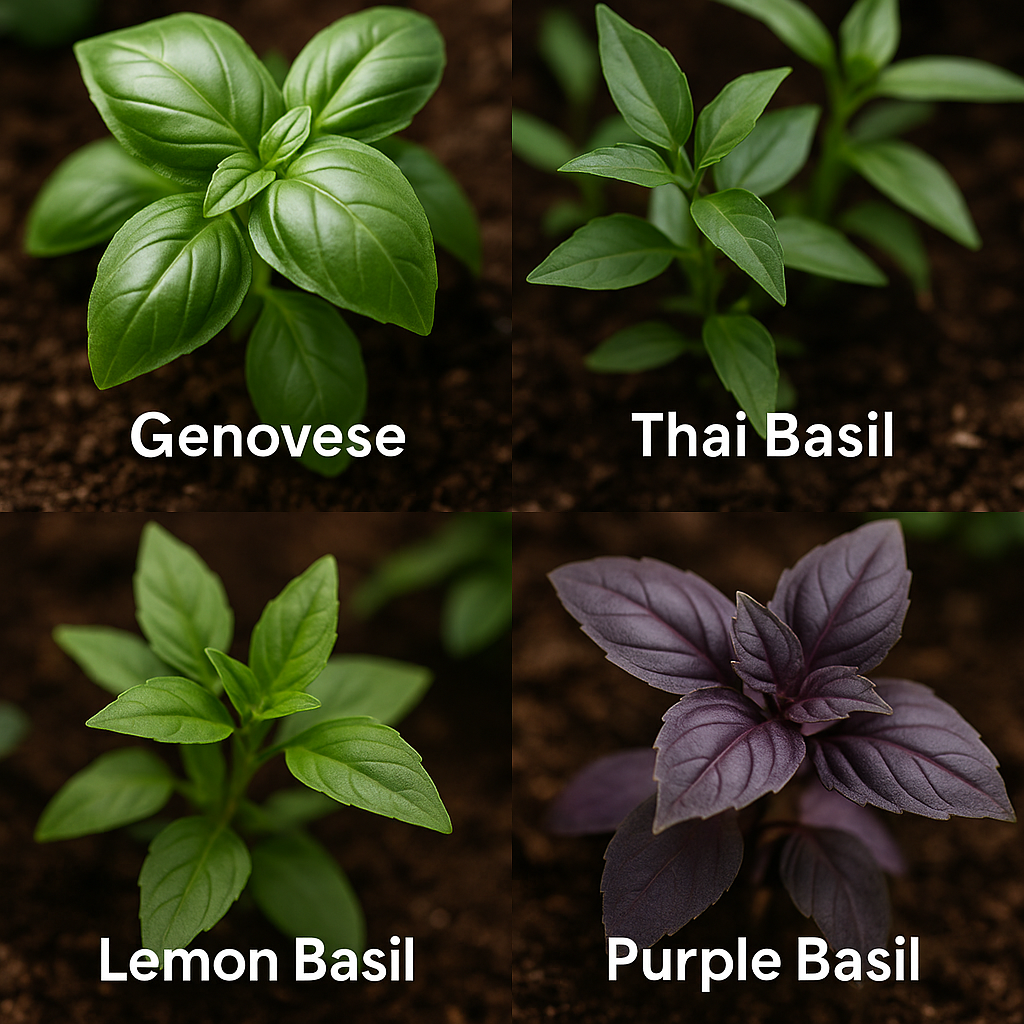
Basil Is More Than an Herb—It’s a Connection to Nature
Growing basil is a daily act of care—for your garden and yourself. It offers moments of calm, creativity, and nourishment, whether you're pruning, sipping basil tea, or sprinkling leaves into your dinner.
SEO Meta Description:
Grow lush basil indoors or out with this complete guide! Learn pruning tips, pest control, companion planting, and winter care for year-round flavor.

